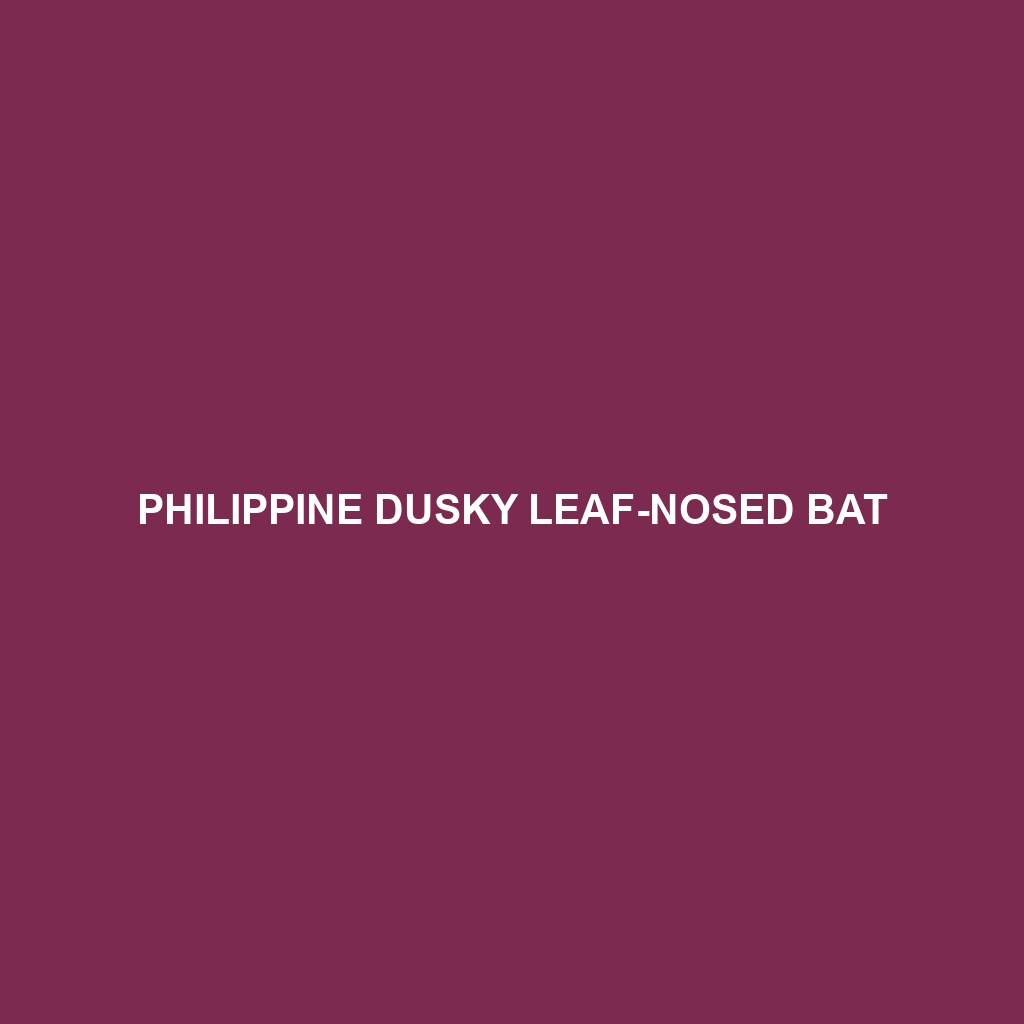Philippine Dusky Leaf-nosed Bat: A Comprehensive Species Description
Common Name: Philippine Dusky Leaf-nosed Bat
Scientific Name: Hypsugo cobaltinus
Habitat
The Philippine Dusky Leaf-nosed Bat is primarily found in tropical forests across the Philippines, particularly on the islands of Luzon and Mindanao. This species prefers humid, dense environments such as tropical rainforests and is often located in proximity to water sources, such as rivers and streams. These habitats provide essential roosting sites in caves and tree hollows, crucial for their survival and reproductive success.
Physical Characteristics
This medium-sized bat typically measures between 8 to 10 centimeters in body length with a wingspan of up to 30 centimeters. The Philippine Dusky Leaf-nosed Bat exhibits a distinctive coloration, featuring a dark brown to grayish fur, which often appears velvety. Noteworthy features include its distinctive leaf-like nose structure which aids in echolocation, and its large, rounded ears that enhance its auditory capabilities.
Behavior
Philippine Dusky Leaf-nosed Bats are primarily nocturnal, emerging at dusk to forage for food. They are social creatures, often roosting in colonies that can number in the hundreds. During nighttime, they display agile flight patterns and are known to engage in acrobatic maneuvers while hunting, which appeals to those interested in their dynamic behavior. Social interactions within the roosting colonies have been observed, suggesting a complex social structure.
Diet
The diet of the Philippine Dusky Leaf-nosed Bat mainly consists of small insects, including moths, beetles, and other nocturnal flying insects. This species employs echolocation to navigate and locate prey during flight, showcasing its highly adapted feeding habits. Due to their role as insectivores, they play a crucial role in controlling insect populations, thus contributing to ecological balance.
Reproduction
Reproductive activities for the Philippine Dusky Leaf-nosed Bat typically occur between April and June, during the warmer months. Females give birth to a single pup, which they care for until it is mature enough to join the colony in flying and foraging. Maternity roosts are formed, providing a safe environment for mothers and their young, thereby ensuring the survival of the species.
Conservation Status
The Philippine Dusky Leaf-nosed Bat is currently classified as ‘Vulnerable’ by the International Union for Conservation of Nature (IUCN). Its population is threatened due to habitat loss from deforestation, urbanization, and other environmental changes. Conservation efforts are crucial to protect this species and its natural habitats.
Interesting Facts
One fascinating aspect of the Philippine Dusky Leaf-nosed Bat is its remarkable echolocation capabilities, which allow it to detect prey even in complete darkness. Additionally, this species has been observed to engage in flocking behaviors that enhance their foraging efficiency. They often exhibit a unique roosting behavior, where they choose to roost with specific social groups.
Role in Ecosystem
The Philippine Dusky Leaf-nosed Bat plays an essential role in its ecosystem primarily as a predator of insects. By consuming large quantities of nocturnal insects, these bats help control pest populations, thereby benefiting agricultural practices. Furthermore, their droppings contribute to soil fertility, enhancing plant growth and supporting a diverse range of organisms within their habitat.
